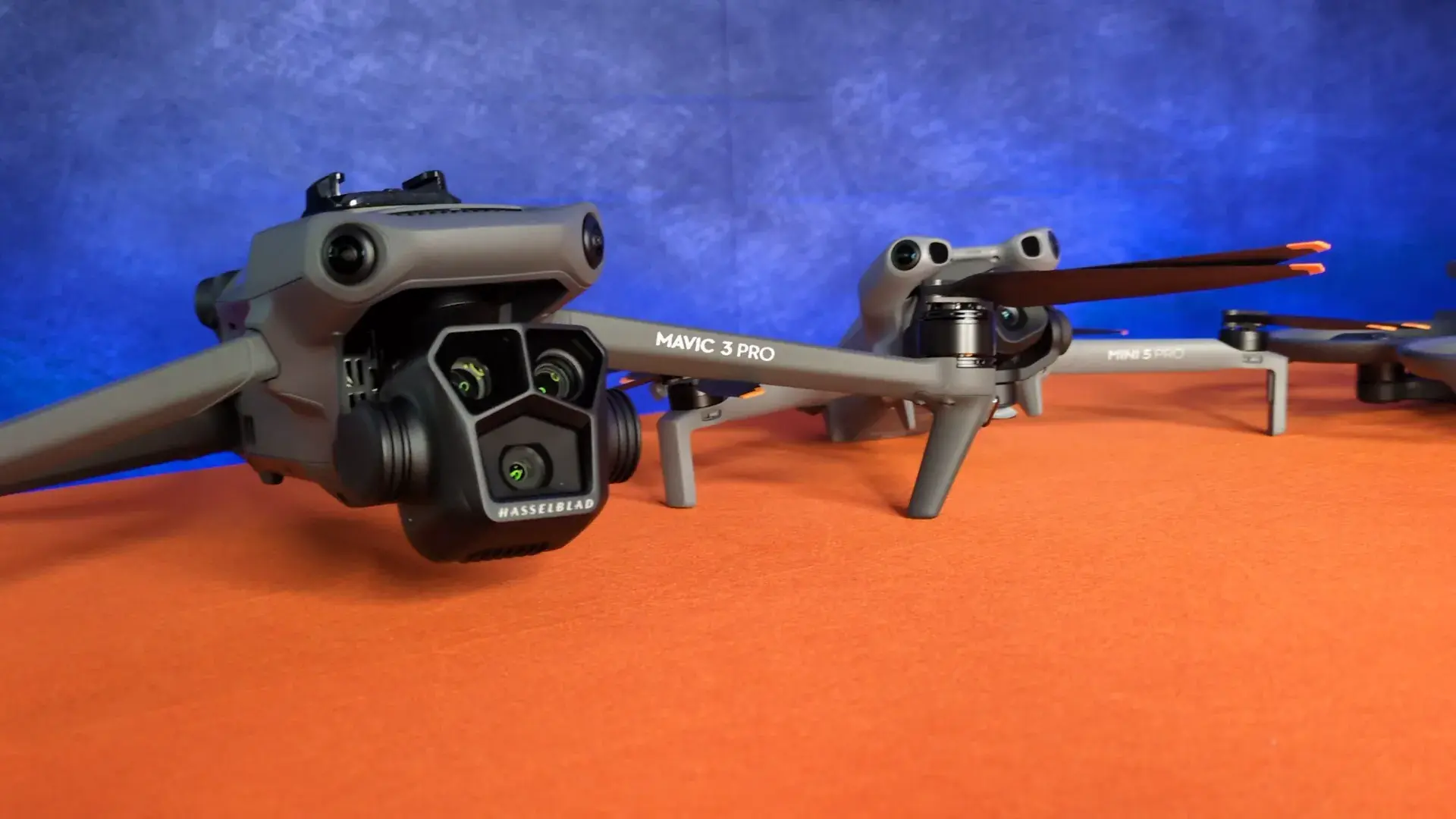
When you fly your drone, signal loss is the disruption of the communication link between it and your remote controller. You suddenly can't send commands, and the live video feed goes black.
This complete loss of control creates an immediate flight risk, but it doesn't always end in a crash. What happens next depends entirely on factors you need to understand to ensure a safe flight and recovery.

30 Second Summary
- Drone signal loss is the interruption of the radio link between the remote controller and the drone.
- Common causes include flying too far, physical obstructions like buildings, and electromagnetic interference from power lines or Wi-Fi.
- It results in the loss of direct flight control and disrupts the live video feed and telemetry data.
- Modern drones trigger a failsafe protocol, like the Return to Home (RTH) feature, instead of falling from the sky.
- Signal loss increases the risk of a crash or flyaway if failsafe protocols fail to activate correctly.
What Is Drone Signal Loss?
If the communication link between your remote controller and drone gets interrupted, you're experiencing signal loss. This critical disruption severs the two-way radio connection that makes remote flight possible. It affects both the commands you send and the data you receive.
Essentially, your controller stops talking to the drone, and the drone stops talking back.
You’ll find you can't send any new flight commands, losing direct control over your drone's flight path.
Simultaneously, the drone isn't able to transmit vital information back to your controller.
This means you immediately lose your live video feed, often called the FPV, leaving you blind in the sky. You also stop receiving important telemetry data, such as your drone's battery status, altitude, and GPS location.
It’s a complete communication breakdown between you and your drone, preventing you from flying it effectively.

How Drone Signal Loss Happens
Since radio signals naturally weaken with distance, simply flying too far is a primary cause of signal loss, even though today's systems can transmit reliably for several miles.
Physical obstructions are another very common culprit. When you fly behind large objects like buildings, dense trees, or metal structures, these obstacles block or reflect the radio waves from your controller.
In dense urban areas, you'll find your reliable control range shrinks to just half a mile. Maintaining a clear line of sight is crucial for a strong connection.
You'll also have to contend with electromagnetic interference. Common sources like power lines, Wi-Fi networks, and Bluetooth devices can disrupt your drone's frequencies.
Extreme weather is another challenge. High humidity, heavy rain, and significant temperature shifts weaken transmissions because moisture in the air absorbs or scatters the radio frequency signals before they can reach your drone.

What Happens During Drone Signal Loss
Losing the connection to your drone doesn't mean it'll just fall out of the sky. Instead, most modern drones trigger a failsafe protocol.
If you're flying a DJI model, for example, it will typically initiate its Return to Home RTH feature automatically. This happens after your remote controller's signal has been lost for more than three seconds.
However, this safety net only works if you've locked onto a GPS signal and successfully recorded a Home Point before takeoff.
Without those prerequisites, your drone won't know where to return.
The drone's specific RTH behavior depends on how far away it is from you.
If your drone is within 50 meters of its Home Point, it simply returns at its current altitude.
If it's further away, its actions change. It might first fly backward along its original flight path for 50 meters. After retracing its steps, it will then begin a straight-line flight back home.
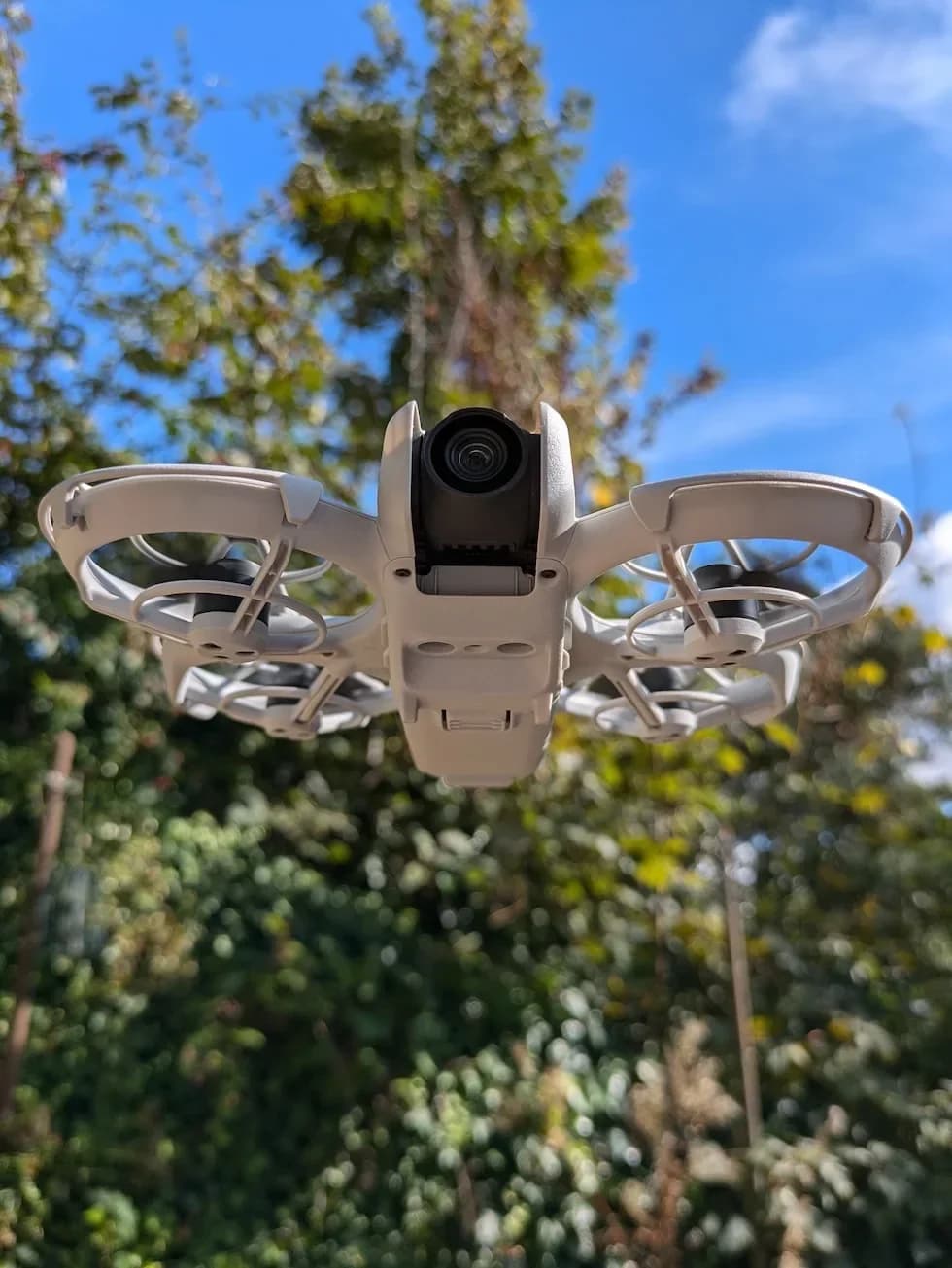
Best Practices to Prevent Signal Loss During Flights
Preventing signal loss requires a combination of thorough pre-flight preparation, smart location selection, and disciplined operational habits. Implementing these practices will dramatically reduce mid-air failsafes and video cutouts.
Pre-Flight Checks
Always perform a comprehensive system inspection before every flight. Ensure your drone achieves a GPS lock with at least 10 satellites before takeoff, which provides the stability needed for the Return to Home function to work properly. Check that all antenna connections are secure and properly aligned, with VTX and receiver antennas positioned perpendicular rather than parallel.
Test your RTH function and verify the home arrow points correctly before attempting any long-distance flights. If flying in a completely new location, take time to perform a GPS calibration to reset your drone's magnetic declination for more accurate positioning.
Choose Suitable Flight Locations
Select open spaces and avoid dense urban zones where buildings, trees, and metal structures can block or reflect signals. Materials like metal and water are particularly problematic as they reflect radio waves and cause dropouts. Stay away from high-voltage transmission lines, which generate strong electromagnetic fields that interfere with your drone's signal and can cause control loss or video breakup.
In crowded areas with heavy Wi-Fi density or multiple wireless devices, expect your signal to fluctuate and consider flying in less populated zones to reduce frequency band competition.
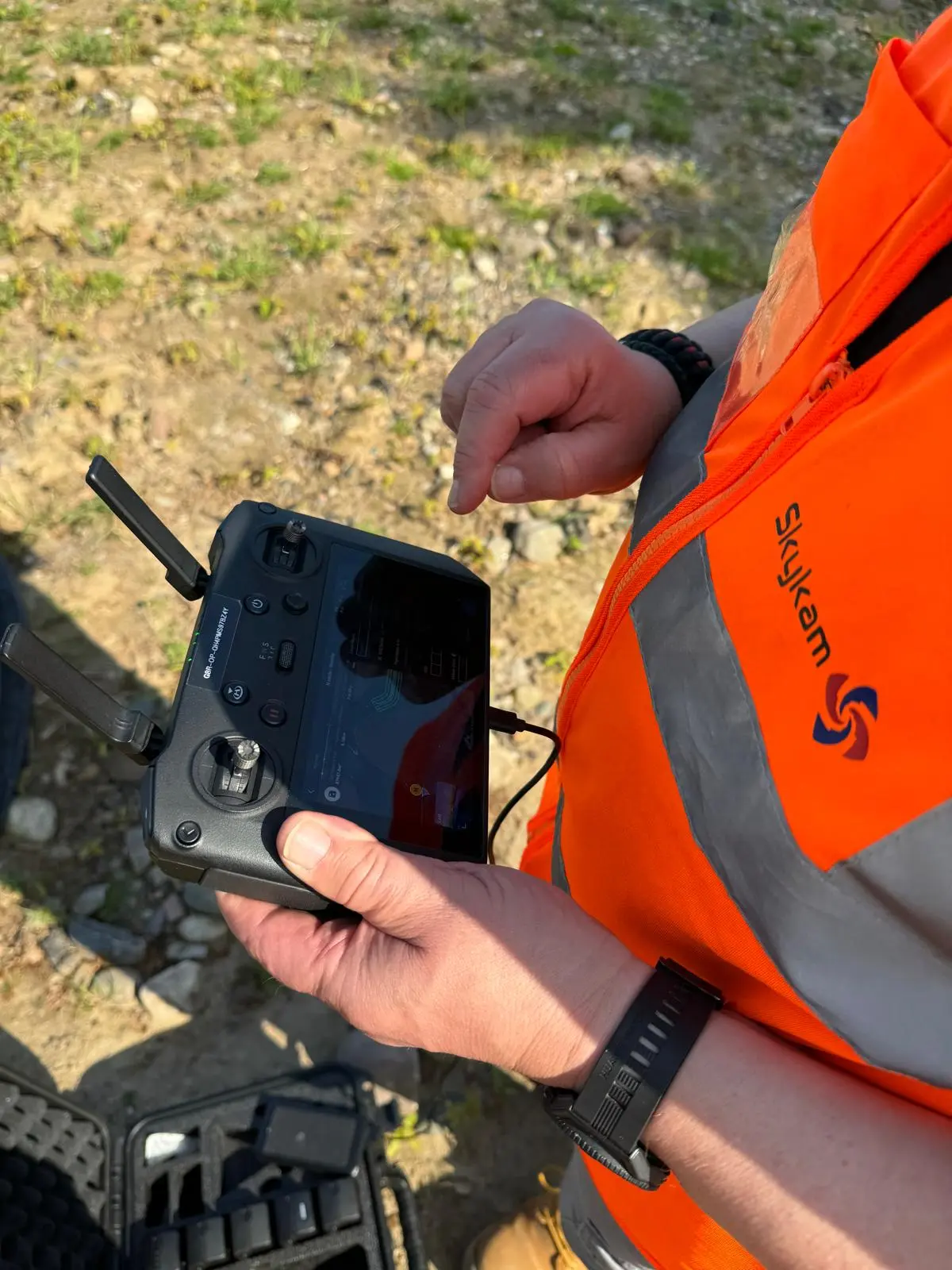
Maintain Safe Operating Distances
The simplest safety measure is to keep your drone close, especially in environments with heavy electromagnetic interference. In areas with exceptionally high EMI sources, maintain a maximum distance of around 800 feet.
Never push your drone to its transmission limits—while modern drones can maintain links up to 5 miles away, this assumes ideal conditions that rarely exist in real-world environments. Flying within visual line of sight not only keeps signals stable but also ensures compliance with regulations.
Optimize Antenna Configuration
Proper antenna setup significantly impacts signal strength. Choose the appropriate frequency band for your environment—2.4 GHz offers longer range and better penetration but is more susceptible to interference, while 5.8 GHz is less crowded and more interference-resistant though with shorter range.
Mount your receiver antenna vertically to ensure alignment with the transmitter antenna remains consistent during flight. For transmitter antennas, point them skyward for general flying, though you may need to adjust orientation based on your specific flight pattern.

Configure RTH Settings Properly
Your drone's RTH feature is the last line of defense against signal loss. Set the RTH altitude high enough to clear any obstacles in your operations area, ensuring the drone can safely return if communication is lost. Update the Home Point to your current location and refresh it periodically if you're moving around. Never abuse the RTH function by manually triggering it out of convenience—treat it as a last resort for emergencies only.
Monitor Signal Strength Actively
Continuously monitor your signal strength during flight using your drone's telemetry or built-in indicators. If you experience a sudden signal drop, immediately increase flight altitude, change direction to avoid interference sources, or initiate RTH if necessary.
Trust your instincts—if your drone exhibits erratic behavior such as uncontrolled drifting or unexpected landing attempts, close the gap by flying it back toward you rather than waiting for conditions to worsen.
Consider Signal Boosters When Needed
For challenging environments, signal boosters can amplify transmission strength and extend reliable range. Use directional boosters for long-range flights with clear line of sight, omnidirectional boosters for dynamic multi-directional flying, and multi-frequency boosters for urban or interference-heavy areas.
Always test signal strength before launching to verify the booster is functioning correctly.
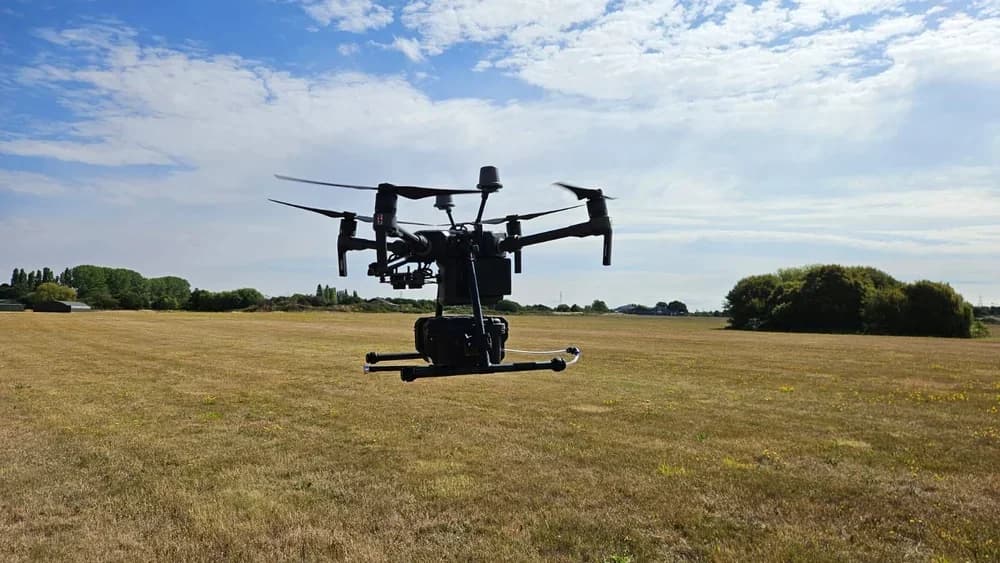
Effects of Drone Signal Loss on Performance
When signal interference disrupts the link to your drone, you'll see immediate and serious performance problems.
You'll first notice a delay in its response; the commands you send from your controller either lag or don't register at all. This lack of control causes erratic flight behavior, leading to unpredictable movements that are dangerous and difficult to correct.
At the same time, your live video feed, which is essential for first-person-view flying, will show major disruptions. You can expect frustrating lag, heavy pixelation, or a completely frozen screen, rendering your video link useless for navigation.
Ultimately, this interference severely cuts down your effective flight range, forcing you to keep the drone much closer.
The greatest danger is the increased risk of a major incident. If there's a total communication loss and the drone's failsafe doesn't activate correctly, you're facing a potential crash or a flyaway.
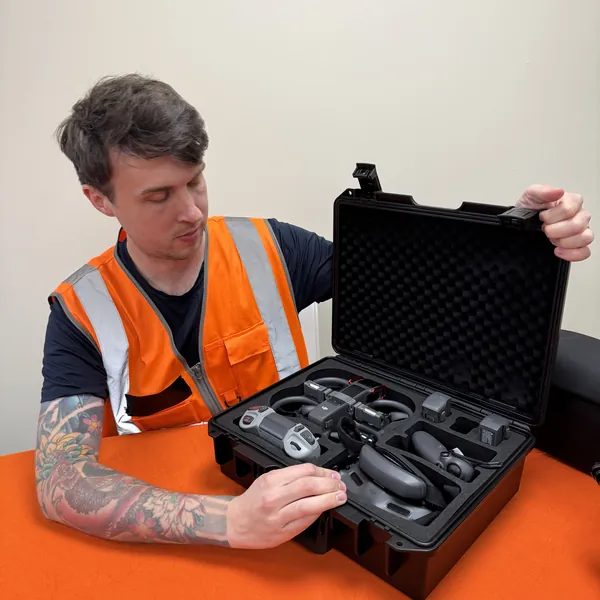
Frequently Asked Questions
Is Flying Beyond Line of Sight Illegal?
Yes, flying your drone beyond your visual line of sight (BVLOS) is generally illegal in the UK.
CAA regulations mandate that you must always keep the drone within your unaided line of sight, not just through its camera. This rule ensures you can see and avoid other aircraft and obstacles in real-time. To fly BVLOS legally, you need a specific and often complex operational authorisation from the CAA. For most hobbyist and commercial drone operators, it's a strict rule.
How Do I Find My Drone After a Flyaway?
If you lose your drone, immediately check your flight app's map for its last known GPS location. You'll want to use any "Find My Drone" feature, which may trigger its lights or an alarm. Go to the last recorded coordinate and begin a systematic grid search of the area. Don't forget to factor in the wind's speed and direction from the time of the flyaway, as it could've drifted. Ask neighbours for help.
Do Third-Party Signal Boosters Actually Work?
Yes, many third-party signal boosters can work, but their effectiveness varies. You’ll find passive boosters, like parabolic reflectors, which focus your signal in one direction. These require you to aim your controller carefully for increased range. Active boosters actually amplify your signal’s power, offering a more significant boost. Before you buy one, though, you’ll need to check local regulations, as some powerful models aren’t legal everywhere and could void your warranty.
Will Insurance Cover a Drone Lost to Signal Failure?
Your insurance coverage for a lost drone isn't guaranteed; it depends entirely on your specific policy. Basic policies often won't cover a "flyaway," attributing it to drone operator error. To be protected, you'll need a dedicated drone plan that includes specific "flyaway coverage." This protects you if the drone is unrecoverable. You must always check your policy's fine print to understand what scenarios are covered and what exclusions might apply to your situation.

Does Cold Weather or Rain Affect My Drone's Signal?
Yes, rain and heavy fog absolutely affect your signal. Water droplets in the air absorb and scatter the radio waves traveling between your controller and the drone, weakening your connection. Cold weather doesn't directly interfere with the signal itself, but it significantly drains your drone batteries. A sudden power loss from a cold drone battery can cause a failsafe or crash, which you might mistake for a signal issue. Always monitor your drone battery life closely in the cold.
Avoid Signal Loss: Hire a Professional UK Drone Operator
Losing your drone's signal mid-flight isn't just an inconvenience; it's a critical failure that can lead to a crash or a flyaway, jeopardising your project and investment. The most effective way to mitigate these risks is by entrusting your aerial projects to experienced professionals who understand the complexities of radio frequencies, environmental interference, and flight planning. Our network includes drone pilots with specialist skills in GPS-denied navigation and the necessary CAA authorisations for challenging flight operations.
This is where HireDronePilot, the UK's premier managed marketplace, comes in. We specialise in connecting businesses with verified professional drone pilots for hire. Our unique platform allows you to streamline drone services through competitive bidding, ensuring quality, compliance, and value for every aerial project across the United Kingdom.
To guarantee your mission's success and avoid the pitfalls of signal loss, hire professional UK drone operators through our secure platform. Post your job for free today and receive competitive quotes from the UK's top drone professionals, ensuring your aerial data is captured safely and effectively.
About the Author

Written by
Peter Leslie
Peter Leslie is a CAA-approved commercial drone pilot with 10+ years experience and over 10,000 flight hours. He holds the GVC and A2 CofC drone licences with full CAA Operational Authorisation. Peter is a member of ARPAS-UK, the UK's non-profit trade association for the drone industry. He founded HireDronePilot to connect UK businesses with qualified, insured drone operators.
Looking for More Drone Work?
Join the UK's leading network of professional drone pilots and grow your business.
Open Access
Bid on any job - all jobs open to all pilots
Grow Revenue
Access high-value commercial projects
Stay Busy
Fill your schedule with regular work
Related Articles

Our Drone Survey Service In Stirling, Scotland
Bringing you Stirling drone survey data from areas no one else can fly.

How Much Does A Drone LiDAR Survey Cost
Forecasting your drone LiDAR survey cost requires understanding what's hidden beyond the initial quote.

Step By Step Process Of Drone LiDAR Survey
Next, discover the crucial post-flight steps that determine your survey's success.
